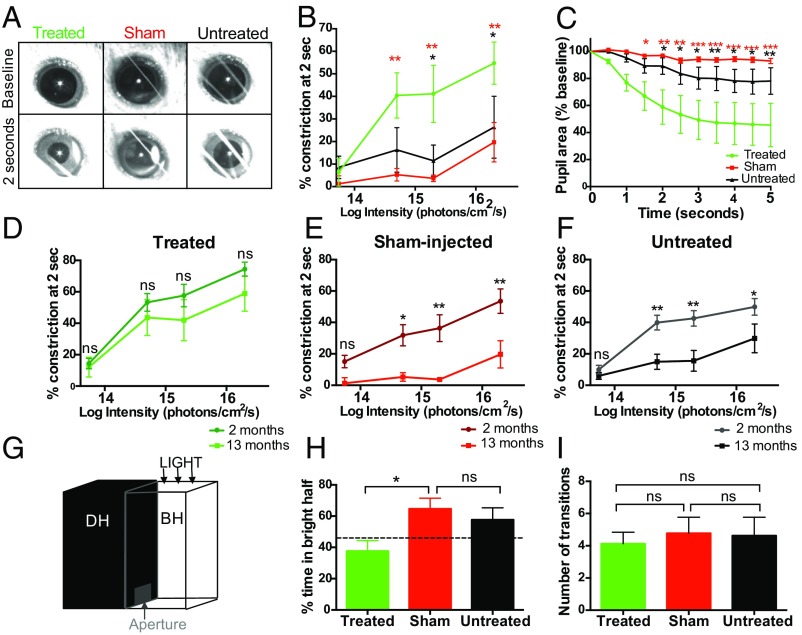Fig. 3.
Visual function restored by human melanopsin expression in the degenerate retina was sustained at 13 mo. Representative images show levels of pupil constriction observed 13 mo after human OPN4 vector delivery, compared with age-matched sham-injected and untreated controls (A). Significantly more pupil constriction was observed in mice treated with OPN4 vector compared with sham-injected (red*) and untreated controls (black*), at multiple light intensities (B) measured at 2 s after light onset (treated, n = 5; sham-injected, n = 8; untreated, n = 13). Time course of pupil constriction at 2 × 1015 photons⋅cm−2⋅s−1 demonstrated a faster response in the treated group (C). Pupil constriction was not significantly different in treated mice (D) at 2 and 13 mo, whereas the level of pupil constriction declined with age in sham-injected (E) and untreated mice (F) (2-mo cohort: treated, n = 10; sham-injected, n = 9; untreated, n = 12; ns, nonsignificant; *P < 0.05, **P < 0.01, repeated-measures two-way ANOVA with Tukey post hoc test). In the behavioral light–dark assay, mice could move freely between the bright half (BH) of the test chamber illuminated by a white light stimulus of 200 lx at ground level and the dark half (DH) (G). Mice treated with OPN4 vector 13 mo previously spent less time in the bright half of the chamber compared with sham-injected controls (H) (treated, n = 8; sham-injected, n = 9; untreated, n = 8; P = 0.03, one-way ANOVA with Tukey post hoc test). The number of transitions between compartments was similar across groups (I).

